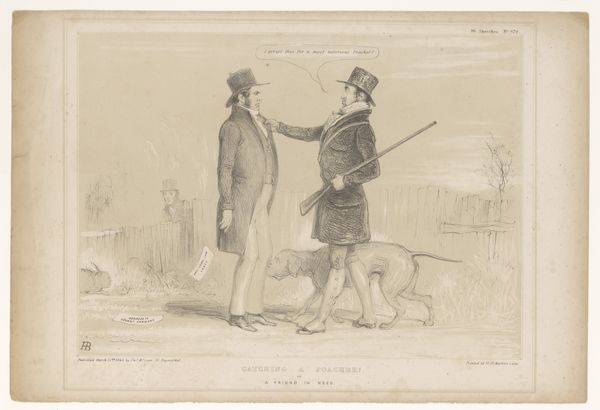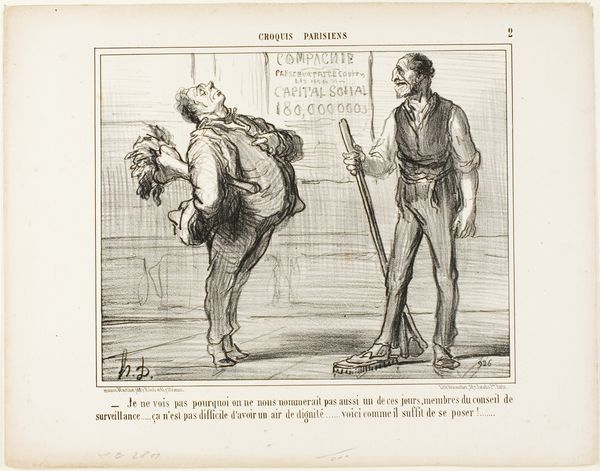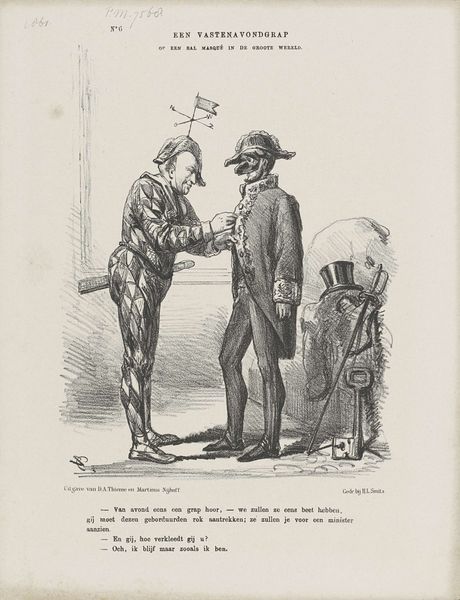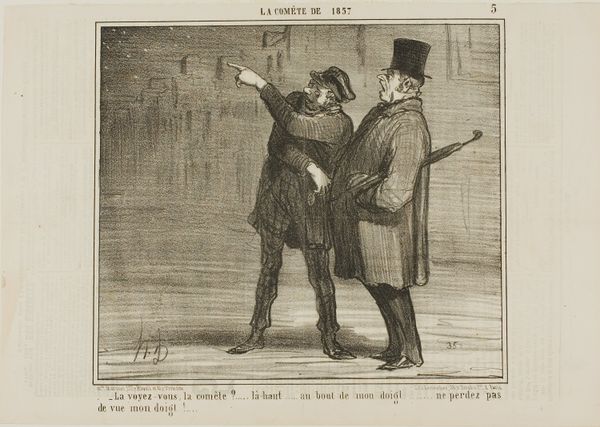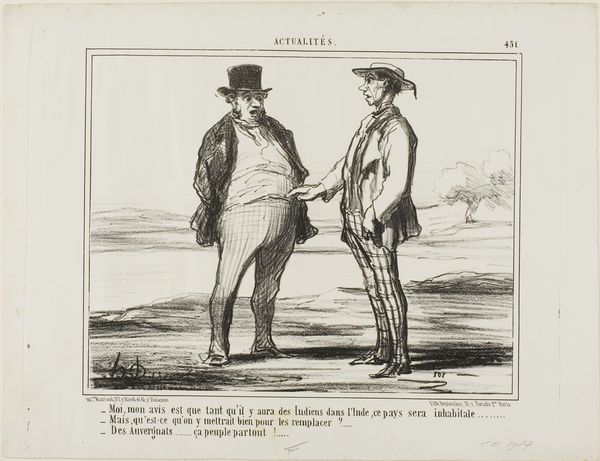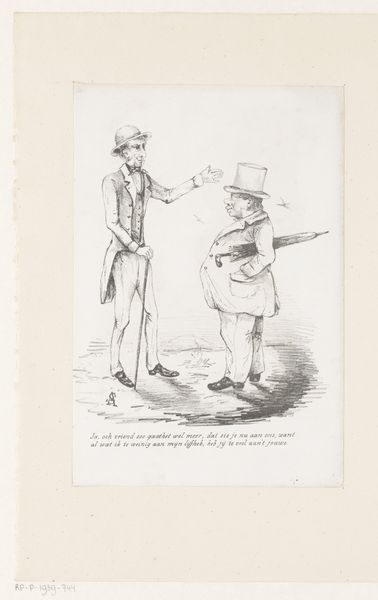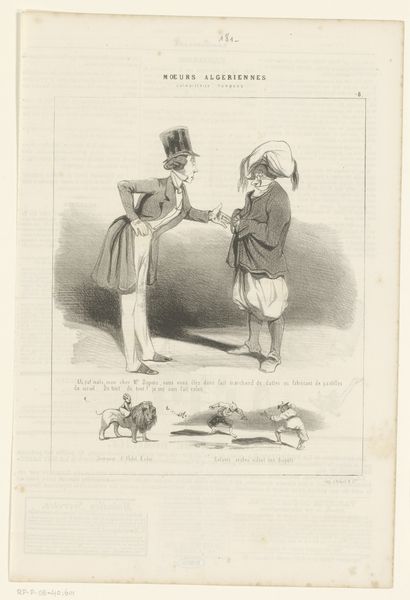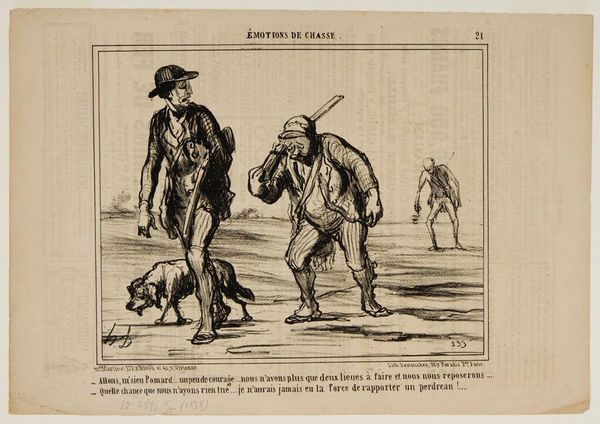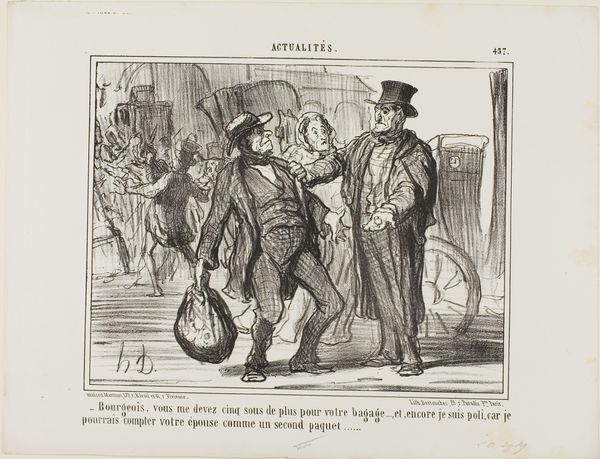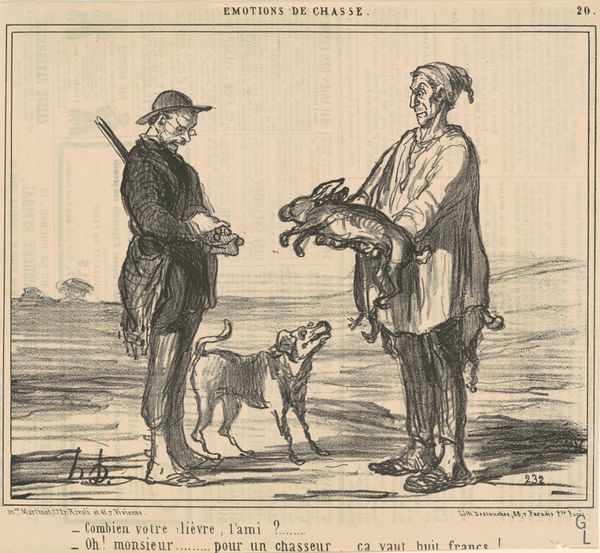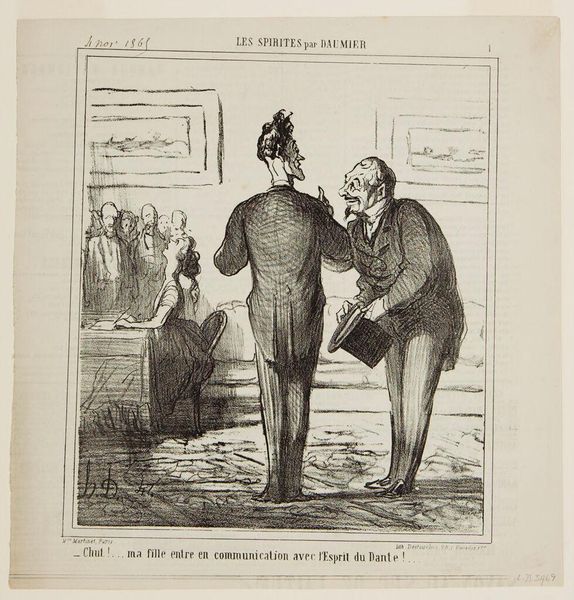
“- Listen... I saw a hare over there... - Was that a long time ago? - Not at all... it was less than three months ago...,” plate 2 from Croquis De Chasse 1857
0:00
0:00
Dimensions: 214 × 255 mm (image); 257 × 359 mm (sheet)
Copyright: Public Domain
Curator: Welcome, everyone. We're standing before a lithograph by Honoré Daumier from 1857, titled “- Listen... I saw a hare over there... - Was that a long time ago? - Not at all... it was less than three months ago...,” which is part of his series Croquis de Chasse. Editor: It strikes me immediately as an image steeped in social critique. The lean, almost grotesque figures, especially juxtaposed in their attire – the dandyish hunter versus the rustic guide – feels immediately satirical. The heavy lines used to create these forms highlight class tensions inherent to the era, no? Curator: Absolutely. Daumier was a master of social commentary, and this work encapsulates that. Note the stark contrast in attire, a top hat versus a simple peasant’s garb. It points directly to the socio-economic disparities prevalent during that time in France and especially how the aristocratic class views its dependants. The artist also often makes use of stock character that is typical of Commedia dell'Arte! Editor: Which returns us to process. The use of lithography would have made these images widely accessible and affordable. I imagine that helped to spread these politically loaded statements? Curator: Precisely! Lithography was a democratic medium, a way to disseminate commentary on the absurdities and injustices Daumier witnessed. He's holding a mirror to society and pointing out its flaws through recognizable stereotypes. Editor: Even the landscape seems deliberately bleak and featureless. There's a sense of futility, or perhaps it is just mocking the elite pastime. The entire enterprise of "leisure" gets called into question when viewing the slumped hunting dog. Is it longing for something more useful to do? Curator: A wonderfully sharp interpretation. One could see the slumped dog as a symbol of this societal malaise, a yearning for genuine engagement rather than superficial pursuits. In Romanticism there is also frequently found the Vanitas elements of time passing us. Editor: It seems impossible to divorce form and content here. Daumier’s technique underscores the print's accessibility as well as its critical view of leisure and social classes, creating a particularly impactful statement. Curator: And it showcases, as well, how timeless the observations of an artist can be in calling out hypocrisy and injustice that may transcend context. Editor: Indeed. A keen eye for the materials and production of the print is just as valuable as looking into the visual history and the symbolism. Thank you.
Comments
No comments
Be the first to comment and join the conversation on the ultimate creative platform.
